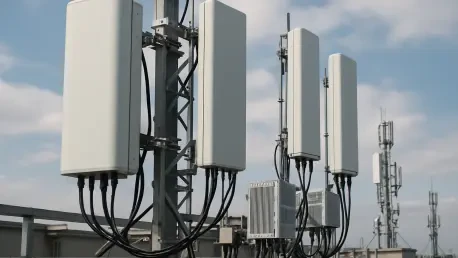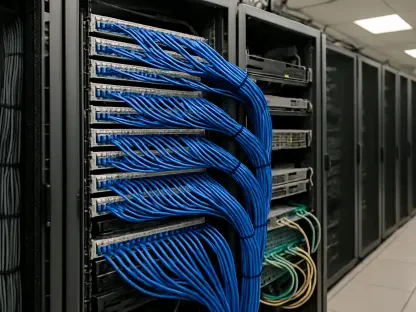In the ever-evolving landscape of telecommunications, the competition among leading providers intensifies with each passing year, showcasing remarkable advancements in technology and service capabilities. Ookla’s latest network testing report delivers compelling insights into the performance of key U.S. telecommunications players, highlighting significant achievements that shape the industry’s direction. T-Mobile US has emerged as a formidable force in the mobile sector, boasting unrivaled median download speeds that surpass 245 Mbps across all technologies. On the other end of the spectrum, AT&T has claimed dominance in fiber internet, with speeds that solidify their position as a leading provider. This ongoing rivalry not only emphasizes the importance of innovation in telecommunications but also acts as a testament to the strides these companies are making in delivering unparalleled experiences to their customers.
Leaders in Mobile Network Performance
T-Mobile’s Dominance in Mobile Speeds
Reflecting its assertive stance in the market, T-Mobile’s astonishing median download speed of nearly 300 Mbps for 5G technologies stands as a testament to its relentless pursuit of excellence. Zipping past competitors with such a remarkable benchmark signifies T-Mobile’s strategic investments in its infrastructure, ensuring user experiences that are both seamless and super-fast. The network’s praise didn’t surface overnight but is backed by consecutive victories in Ookla’s assessments, including the accolade of “best network” from prior periods. By prioritizing speed and reliability across all technologies, T-Mobile managed to craft a competitive advantage that resonates with users nationwide, contributing to its escalating popularity among consumers who crave high-speed connectivity on the go.
Verizon’s Position in the Mobile Arena
Verizon’s stance within the mobile industry reveals a complex yet admirable performance profile. While trailing behind T-Mobile regarding overall download speeds, Verizon shines in specific domains. Foremost among these is the company’s prowess in video streaming categories, which reinforces its reputation for delivering uninterrupted service, vital for customers who value a robust online experience. Moreover, placing second in median 5G speeds illustrates Verizon’s strategic commitment to integrating cutting-edge technology, ensuring users benefit from enhanced network capabilities. Such advancements are vital in keeping Verizon competitive, as it strives to fortify its position amid growing pressure from industry leaders. Balancing innovation with user experience, Verizon ensures its consumers remain satisfied against a backdrop of fierce rivalry.
Pioneering in Fiber Internet Services
AT&T’s Fiber Network Achievements
In the fiber domain, AT&T continues to push boundaries, far surpassing its competitors with outstanding median download and upload speeds, reaching 363.54 Mbps and 296.52 Mbps, respectively. The pursuit of excellence within fiber infrastructure lays a foundation for AT&T’s dominant presence across 14 U.S. regions, achieving not merely significant coverage but also solidifying consumer trust through superior service quality. The brand’s practical approach to satisfying customer expectations positions AT&T not only as a service provider but as an enterprise deeply rooted in addressing consumer needs effectively. Further, AT&T’s pronounced emphasis on fiber growth is underscored through strategic expansions, such as acquiring Lumen’s Mass Market fiber business, amplifying subscriber bases and collective reach to unprecedented levels.
Challenges and Opportunities for Frontier
Frontier’s participation in the fiber internet realm captures attention with its rapid ascension to significant standing yet finds itself narrowly edged out by AT&T in key measures. Nonetheless, Frontier’s admirable contributions to advancing fiber networks demonstrate a clear dedication to improving service quality through increased investments and progressive technological enhancements. However, navigating challenges in matching AT&T’s expansive growth while maintaining competitive offerings remains pivotal to Frontier’s long-term success. It brings opportunities to refine strategies and explore new avenues for development, increasingly vital within a domain dominated by powerhouses such as AT&T. As innovations unfold, Frontier stands at a crossroads, where deliberate strategies could propel its stature among fiber giants.
Understanding Competitive Landscape
The Role of Technological Advancements
The overarching competitive landscape characterized by networks like T-Mobile and AT&T underscores the significance of continuous technological advancement. Investment in cutting-edge infrastructure technologies plays a crucial role in determining the prowess of telecom providers, ultimately deciding their standing within the industry. This dynamic demonstrates how subsequent developments capture attention, with major players aggressively vying for leadership determined not only by speed metrics but by functionality and consumer trust. Understanding these factors is crucial for stakeholders seeking to optimize their strategies amidst such a fast-paced environment, leveraging insights to persistently refine service offerings, fostering sustained user engagement.
Implications for Consumer Experience
The competitive landscape in the telecom industry, dominated by major networks like T-Mobile and AT&T, highlights the importance of ongoing technological innovation. Investing heavily in state-of-the-art infrastructure is key to defining the capabilities of telecom companies, influencing their rank and reputation in the market. This environment illustrates how newer advances capture significant interest, with big players fiercely competing for leadership. Their standing is judged not just on speed, but also on how well they deliver functionality and build consumer trust. For stakeholders aiming to optimize their business strategies within this rapid industry setting, understanding these elements is essential. By tapping into valuable insights, companies can consistently enhance their service offerings, ensuring persistent user engagement and customer satisfaction. It’s a race where speed, innovation, and customer loyalty intertwine to shape the future of telecommunications, with providers continuously exploring ways to stay ahead in this fast-evolving landscape.









